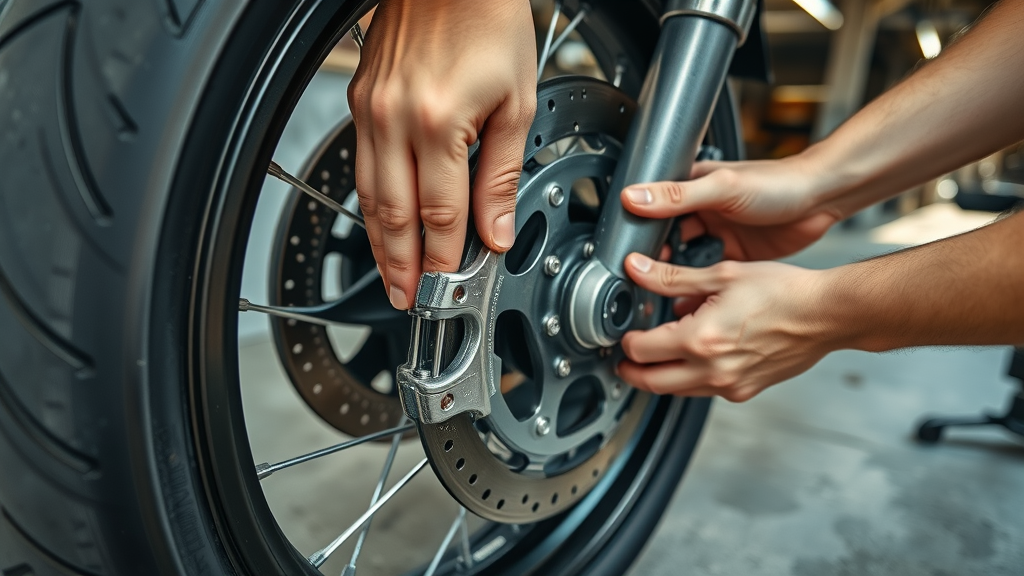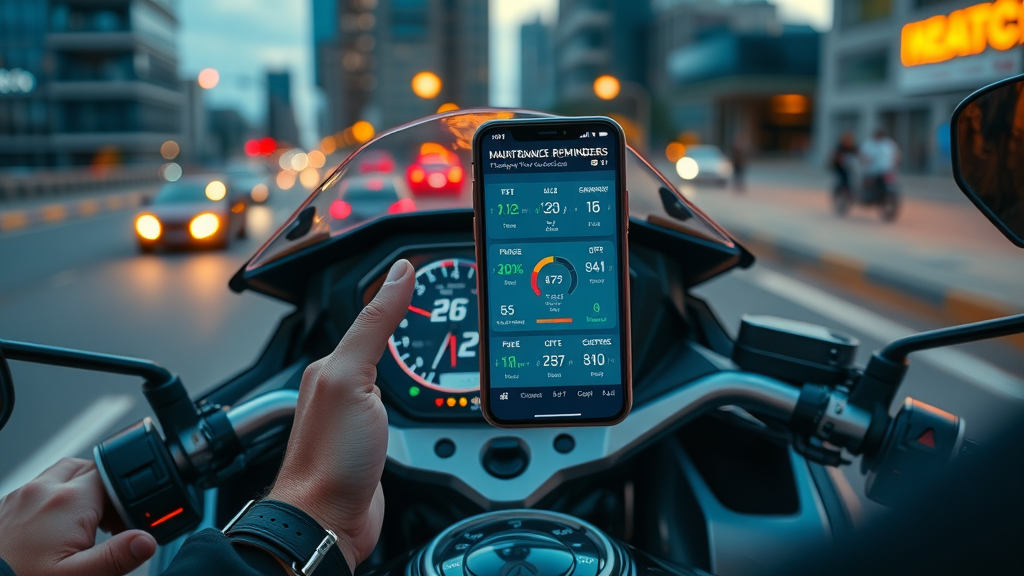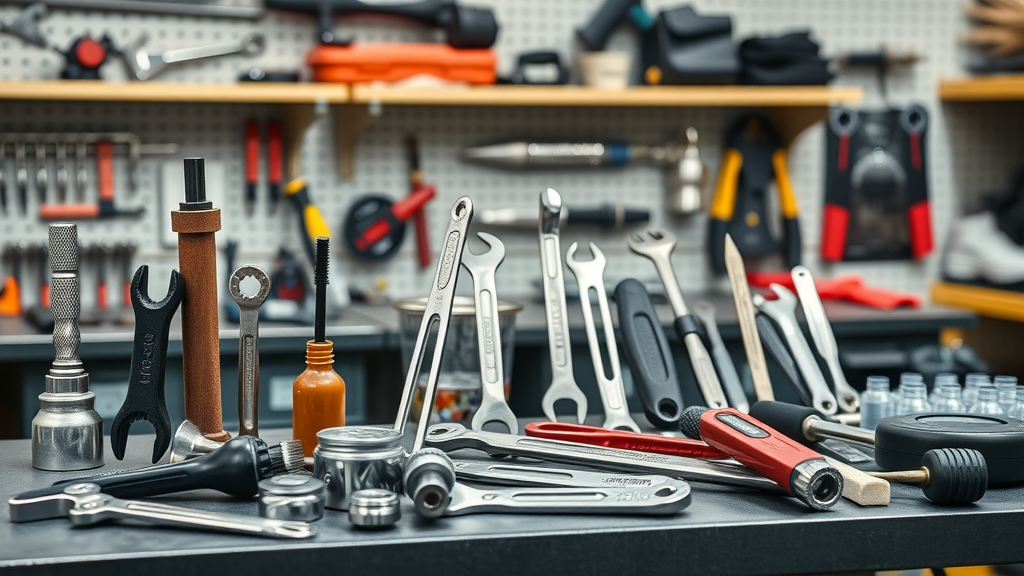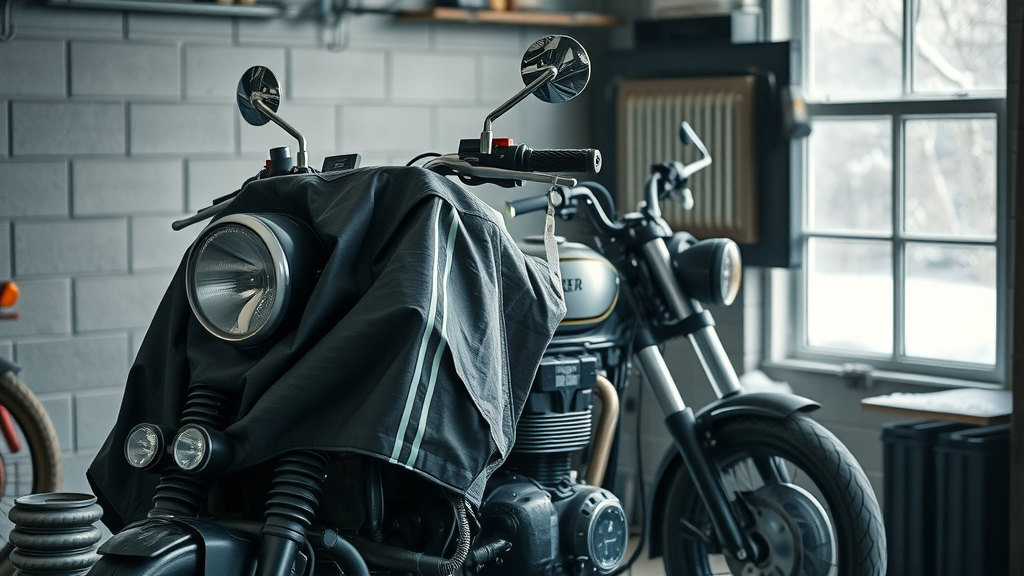Did you know that over 12% of mechanical failures causing motorcycle crashes are due to skipped or improper maintenance ? Navigating your motorcycle’s care isn’t just about pride in your ride—it's a crucial part of staying safe and ensuring your bike lasts. This motorcycle maintenance guide is designed to arm every rider, from beginners to veterans, with game-changing facts, a bulletproof maintenance checklist, and pro-level tips that could save your bike—and your life.
Why Every Rider Needs a Motorcycle Maintenance Guide: Surprising Facts and Key Takeaways
- According to the NHTSA, lack of routine motorcycle maintenance is a factor in over 12% of mechanical failures leading to crashes. This motorcycle maintenance guide can significantly reduce your risk.
- Explore little-known facts, such as overinflated or underinflated tires increasing stopping distance by up to 30%.

Whether you’re new to two wheels or a seasoned motorcycle owner, skipping basic motorcycle maintenance tasks can lead to major mishaps. Studies indicate that improper tire pressure alone is a hidden culprit—affecting handling and drastically increasing your chances of an accident. Beyond personal safety, a proper motorcycle maintenance checklist boosts performance, saves money over time, and helps keep your ride roadworthy for years to come. This guide is grounded in facts and real-world examples, enabling you to avoid common pitfalls and keep your bike in peak condition.
By following a structured maintenance schedule and staying vigilant about routine tasks, you transform motorcycle maintenance into a rewarding habit instead of a dreaded chore. From preventing corrosion with the right cleaning techniques, to learning when and how to change the oil or check brake pads, each rider can improve not just reliability—but also confidence. Let’s dive into actionable ways to maintain your motorcycle so you can ride with pride and assurance.
What You'll Master in This Comprehensive Motorcycle Maintenance Guide
- Understand a complete motorcycle maintenance checklist
- Execute essential maintenance tasks
- Learn troubleshooting tips for common issues
- Extend the life and performance of your motorcycle
- Gain confidence in DIY motorcycle maintenance
This motorcycle maintenance guide delivers more than advice—it helps you master the maintenance schedule, understand why every check task matters, and troubleshoot small issues before they lead to bigger headaches. You’ll learn hands-on skills from measuring tire pressure to changing filters and oil, with guidance on basic tools and advanced strategies alike. Ready to become your own motorcycle’s best technician? Keep reading.
The Essentials of a Motorcycle Maintenance Guide: Safety, Value, and Performance
- Motorcycle maintenance basics for all riders
- Why a proactive motorcycle maintenance guide saves money and prevents breakdowns
- How maintenance schedule adherence maximizes safety

At its heart, a basic motorcycle maintenance checklist gives every motorcycle owner clarity and structure. Start with fundamentals: monitor your tire pressure every ride, check your oil level routinely, and stay vigilant for brake pad wear. These simple maintenance tasks, performed on schedule, address the majority of issues found in annual service reports and can prevent expensive repairs down the line.
Maintaining your motorcycle not only sustains value—it also enhances performance and keeps you safer. Proactive upkeep catches signs of wear before they escalate. For example, replacing an aging air filter or keeping brakes sharp saves money and boosts confidence, while improving bike responsiveness. Plus, adhering to your make and model’s maintenance schedule is key to preserving warranty coverage and resale value.
A routine approach isn’t just about fixing what’s broken—it’s about anticipating needs so you’re never caught off guard. Seasoned riders know that regular attention to moving parts, fluids, tires, and controls leads to smoother rides and longer-lasting motorcycles. Embrace this comprehensive approach, and you'll prevent corrosion, avoid roadside breakdowns, and spend more time enjoying the open road.
Motorcycle Maintenance Checklist: Your Step-by-Step Approach
- Quick overview table of routine motorcycle maintenance tasks
| Task | Frequency | Tools Needed | Signs of Wear/Action Needed |
|---|---|---|---|
| Tire Pressure Check | Before each ride | Digital/analog tire gauge | Tread depth uneven, ride feels unstable |
| Oil Level Check | Every 2 weeks/Before long rides | Clean rag, sight glass/dipstick | Engine sounds rough or oil dirty |
| Oil and Filter Change | 3,000–6,000 miles or as per manual | Oil filter wrench, correct oil | Oil is dark, gritty, or below recommended level |
| Air Filter Cleaning/Replacement | Every 5,000–10,000 miles | Screwdriver, replacement filter | Poor engine performance or visible dirt |
| Spark Plug Inspection | Every 5,000–10,000 miles | Spark plug socket | Difficulty starting, misfires, or fouling |
| Brake Pad Inspection | Every 3,000 miles or as needed | Caliper tool, flashlight | Squealing, poor stopping, visible wear |
| Chain or Drive Belt Care | 500 miles (chain); as per manual (belt) | Chain lube, cleaner, brush | Slack, rust, or jerky motion |
- How to personalize your own maintenance schedule
Personalizing your motorcycle maintenance schedule ensures it fits your riding season, mileage, and bike’s make and model. Riders in dusty or wet climates, for example, may need more frequent air filter changes and chain lubrication. Use this motorcycle maintenance guide as a baseline, then adjust intervals based on your environment and riding habits—if you own a dirt bike, maintenance intervals for air filters and chain cleaning will be much shorter due to harsh riding conditions.
Consistency is key: Document every basic motorcycle maintenance task you complete in a log or digital app. Staying organized prevents missed checks and helps catch patterns of recurring wear—enabling you to address potential issues before they become costly repairs.
Basic Motorcycle Maintenance Tasks Every Rider Should Know
Inspecting and Adjusting Tire Pressure for Optimal Safety
- How to measure tire pressure and when to adjust
Correct tire pressure influences stopping distance, ride comfort, and safety. Begin by using a digital or analog gauge to check each tire when cold. Identify the recommended PSI (pounds per square inch) for your make and model, usually listed on the frame or in your service manual. Under- or overinflated tires affect handling and increase stopping distance up to 30%.
Adjust tire pressure as needed, keeping in mind variations due to temperature changes. Visually inspect the tire tread depth as well; a shallow tread compromises grip, especially on wet roads. For dirt bike riders, adjust settings for trail vs. paved surfaces. Prioritize this step for every ride and you’ll drastically reduce the risk of blowouts or sudden loss of control.
Checking Oil Level and Performing an Oil Change
- When to change oil, difference between engine oil types, and proper oil filter selection
Checking your motorcycle’s oil level is vital. Warm up the engine briefly, turn it off, then let it sit a few minutes. Locate the dipstick or sight glass and check for adequate oil between minimum and maximum marks. If the oil looks dark or gritty, it’s time for an oil change —a process every rider should learn.
Select the correct engine oil type—synthetic, semi-synthetic, or mineral—per your owner’s manual. Don’t forget the oil filter . A fresh filter with each oil change keeps contaminants at bay. Changing the oil and filter regularly helps the engine last longer, ensures cooling, and can prevent expensive breakdowns. Skipping this step exposes your engine to excess wear and potential overheating.
Air Filter Maintenance: Cleaning and Replacing
- Why air filter upkeep is critical to engine performance
The air filter protects your engine from dust and debris. A dirty or clogged air filter reduces airflow, impairs combustion, and lowers fuel efficiency. Inspect your air filter according to your maintenance schedule—more often in dusty conditions or after off-road use.
For most models, cleaning or replacing the air filter only takes a few minutes with basic tools. Foam filters often require gentle cleaning and re-oiling, while paper filters should be replaced once they show dirt or damage. Regular air filter maintenance keeps your engine running smoothly and can boost performance on every ride.
Spark Plug Inspection and Replacement
- Signs of worn or dirty spark plugs and how to replace
A neglected spark plug can cause poor starts, engine misfires, and sluggish throttle response. Remove the plug with a spark plug socket and inspect for soot, carbon buildup, or worn electrodes—these are signs it’s time for replacement. Refer to your service manual for proper heat range and gap size.
Installing a fresh spark plug is straightforward but transformative—a small change that can rectify starting issues and optimize engine performance. Always torque to manufacturer specs and use anti-seize compound if recommended.
Brake Pad and Brake Pads: Detection and Replacement
- Recognizing brake pad wear and DIY replacement safety
Effective brake pads are non-negotiable for every motorcycle owner. Squealing, reduced braking power, or visible thinness signal the need for inspection and replacement. Use a flashlight and caliper to measure pad thickness—if pads are under manufacturer threshold, replace promptly to avoid damaging rotors.
With basic tools and attention to detail, most riders can change brake pads at home. Always follow step-by-step instructions, ensure proper alignment, and test brakes carefully in a controlled environment after installation. Reliable stopping power directly translates to safety, whether you’re commuting, touring, or hitting the trails.

Performing a Full Motorcycle Maintenance Checklist for All Makes and Models
- Step-by-step visual checklist for comprehensive upkeep
- Differences in maintenance needs for cruisers, sport bikes, and dual-sport motorcycles
- Record-keeping tips for your maintenance schedule
Every motorcycle maintenance checklist should be tailored for your particular ride—cruisers, sport bikes, dual-sport, and dirt bikes all have unique requirements. For instance, sport bikes may require more frequent chain and brake pad inspections due to higher RPMs, while dual-sport bikes exposed to water or mud will need more frequent air filter and drive belt checks.
Begin with a thorough step-by-step inspection: check tire pressure, brakes, oil level, chain/belt, lights, and controls. Follow with regular cleaning, lubrication, and adjustments as outlined in your service manual. Record each completed maintenance task—either on paper or via an app—so you can identify patterns or recurring needs. Structured record-keeping guards against skipped checks and ensures you stay on top of your maintenance schedule.
By adapting this guide to your motorcycle’s make and model, you’ll maximize performance, reliability, and the bike’s lifespan. Don’t overlook seasonal factors, ride intensity, or terrain—all of which influence what’s “regular” for your motorcycle maintenance needs.
Expert Maintenance Schedule Strategies to Ensure Longevity
- How to create a practical maintenance schedule based on your riding style
- Recommended intervals for checking vital components in the motorcycle maintenance guide
- Using digital apps for motorcycle maintenance tracking
The best maintenance schedule is one built around both your bike’s make and model and your riding habits. Daily commuters may need more frequent tire pressure and brake checks, while weekend cruisers can space out some inspections. For dirt bike or adventure riders, plan for shorter intervals on chain, air filter, and oil maintenance due to greater exposure to dirt and water.
Use manufacturer recommendations as a starting point, then refine your intervals as you track wear patterns over time. Many riders use digital apps to log maintenance tasks—these can provide reminders, show trends, and even help track costs, ensuring you never miss a checkup. Documenting service tasks can also help maintain warranty coverage and increase resale value.

Common Motorcycle Maintenance Problems and How to Solve Them
- Unusual engine noise, poor fuel economy, stalling—diagnosing the most common issues
- How to prevent tire pressure loss, chain wear, and electrical problems
"Regular maintenance not only extends your motorcycle’s life—it can literally save your life on the road." – Certified Motorcycle Mechanic
The most common motorcycle maintenance problems are easy to prevent with consistent care. Unusual engine noises often signal low oil level or overdue oil changes, while stalling may point to a dirty air filter or fouled spark plug. Declining fuel economy can be traced to tire pressure, old engine oil, or clogged air filters—all easily addressed through a structured maintenance checklist.
Prevent recurring issues by checking tire pressure before each ride and lubricating your drive chain or belt as specified. Electrical gremlins, such as flickering lights or repeated battery loss, usually resolve with full battery checks and cleaning terminal connections. Don’t ignore warning signs: regular attention to these basics often reveals small fixes before big repairs are needed.
For the DIY enthusiast, a service manual, patience, and a good set of basic tools empower you to tackle most issues—saving money and keeping your ride in prime condition.
Essential Tools and Products for Your Motorcycle Maintenance Guide
- Must-have tools for every basic motorcycle maintenance task
- Lubricants, correct engine oil types, chain cleaners, air filters, and more
- Best practices for tool use and storage

The ideal toolbox for motorcycle maintenance includes basic tools: metric and standard wrenches, sockets, pliers, a digital tire pressure gauge, oil catch pan, chain brush, and cleaning supplies. For specific tasks like oil changes or spark plug swaps, invest in purpose-built wrenches and filters. Use only the correct engine oil, lubricants, and replacement parts for your motorcycle’s make and model.
Store tools in a clean, dry area to prevent corrosion and keep them organized for easy access. Dedicated garage cabinets or toolboxes make it simpler to manage regular maintenance, and proper storage extends the life of your investment.
High-quality tools don’t just make basic motorcycle maintenance easier; they ensure every job is done right—helping you maintain your motorcycle’s safety, performance, and value.
- Watch a pro complete the top five maintenance tasks from the checklist
Follow along as a professional mechanic demonstrates the motorcycle maintenance checklist in real time: checking tire pressure, performing an oil change, cleaning or swapping the air filter, inspecting spark plugs, and tackling brake pad replacement. These clear visual instructions build confidence so you can maintain your motorcycle with ease at home.
Seasonal Motorcycle Maintenance Checklist: Preparing for Riding and Storage
- Checklist for spring riding season and winterization
- Inspection of motorcycle battery, tire condition, fluids, and air filters by season

Every rider should perform a thorough seasonal maintenance checklist . In spring, focus on tires, oil and filter, brake fluid, battery charge, and air filter condition before kicking off a new riding season. End-of-season winterization includes cleaning your ride, topping off fluids, and keeping the battery charged. Cover your motorcycle to prevent corrosion and store in a dry, ventilated space to protect against cold and damp.
Neglecting seasonal maintenance puts your bike at risk of premature wear, battery failure, and degraded fluids. A well-cared-for motorcycle starts every season strong and saves money by sidestepping preventable repairs.
Advanced Motorcycle Maintenance Guide: DIY Repairs vs. Professional Service
- Deciding when to tackle repairs and when to call the experts
- Maintenance tasks best suited for at-home mechanics
- Factors influencing maintenance costs
Knowing when to DIY and when to seek professional help is crucial. Most basic motorcycle maintenance—including the tasks listed earlier—can be handled at home with a basic tool kit and the support of a service manual or video guide. Complex repairs, such as internal engine work or computerized diagnostics, are best left to certified mechanics.
Factors like your skill level, available tools, and the complexity of your bike all play a role in maintenance costs. Investing in learning and the right basic tools upfront saves you money in the long run while giving you confidence and independence in caring for your ride.
Always prioritize safety—when in doubt, consult a professional before tackling a difficult or unfamiliar repair. This approach ensures maintenance quality and keeps your motorcycle adventure-ready for years to come.
- Learn live techniques for spark plug changes, oil filter swaps, and tune-up tasks
Witness a real-time motorcycle tune-up, including spark plug replacement, oil and filter change, air filter cleaning, and chain adjustment. These foundational skills form the backbone of every motorcycle maintenance guide . Watch, learn, and apply step-by-step strategies from professional mechanics to keep your bike performing its best.
People Also Ask: How to Learn Basic Motorcycle Maintenance?
- Master fundamental skills through manufacturer manuals, in-person courses, and this motorcycle maintenance guide. Use online video tutorials for visual learning, and begin with easy tasks like checking tire pressure, inspecting oil level, and cleaning air filters before progressing to advanced repairs.
People Also Ask: What is the Common Maintenance Problem on a Motorcycle?
- The most common issues include low tire pressure, dirty or worn air filters, old engine oil, faulty spark plugs, and worn brake pads. Following a structured motorcycle maintenance checklist and schedule helps to prevent these problems.
People Also Ask: Can I Service My Motorcycle Myself?
- Yes. With this motorcycle maintenance guide, the right tools, and some basic safety knowledge, you can perform essential maintenance tasks at home. Always refer to your owner’s manual, use reliable checklists, and know when to consult a professional for complex repairs.
People Also Ask: What Does a Motorcycle Tune Up Include?
- A comprehensive tune up as outlined in this motorcycle maintenance guide includes checking and replacing spark plugs, adjusting chain and cables, inspecting and changing oil and oil filter, cleaning or replacing the air filter, checking brake pads, tire pressure, and inspecting all lights.
Frequently Asked Questions About Motorcycle Maintenance Guide
-
How often should I follow a motorcycle maintenance checklist?
Follow your motorcycle maintenance checklist before each ride for basics like tire pressure and monthly or per your service schedule for items such as oil changes, air filters, and brake inspections. Adjust intervals for harsh environments or high-frequency riding. -
What are the signs I need a new air filter or spark plug?
If you notice poor engine performance, misfires, sluggish starts, or a drop in fuel economy, check your air filter and spark plug. Visible dirt, oil, or wear means it’s time to replace them. -
Is it necessary to warm up the engine before maintenance tasks?
Warming up the engine helps for oil checks and changes, as warm oil drains more easily and readings are more accurate. Ensure safety by letting hot components cool before handling them. -
How do I choose the right engine oil and oil filter for my motorcycle?
Always consult your make and model owner’s manual for engine oil specifications and proper oil filter type. Using approved products ensures compatibility and longevity for your engine.
Summary: Key Takeaways from the Motorcycle Maintenance Guide for Every Rider
- Regular and proactive motorcycle maintenance saves lives and money.
- A motorcycle maintenance checklist simplifies routine upkeep.
- Stay consistent with your maintenance schedule for reliability and safety.
Speak to a Motorcycle Maintenance Expert: 847-458-4858 for Personalized Guidance
- Take the next step: Call for expert advice tailored to your motorcycle maintenance needs, schedule service, or get recommendations on tools and products.
Ready to take maintenance into your own hands? Call Us Today: 847-458-4858.
To further enhance your motorcycle maintenance knowledge, consider exploring these comprehensive resources:
- Motorcycle Maintenance Tips: How to Maintain Your Motorcycle for Peak Performance
This guide offers an in-depth checklist covering essential maintenance areas such as engine oil changes, tire inspections, brake system checks, and battery upkeep. It provides detailed steps and recommendations to keep your motorcycle in top condition. ( kamaxgroup.com )
- Motorcycle Maintenance Checklist + Guide
This resource presents a structured monthly maintenance checklist, including tasks like oil level checks, tire pressure inspections, brake assessments, and chain lubrication. It also offers a winterizing checklist to prepare your motorcycle for off-season storage. ( riders-share.com )
By consulting these guides, you’ll gain valuable insights and practical steps to ensure your motorcycle remains safe, reliable, and ready for every ride.
 Add Row
Add Row  Add
Add 



Write A Comment